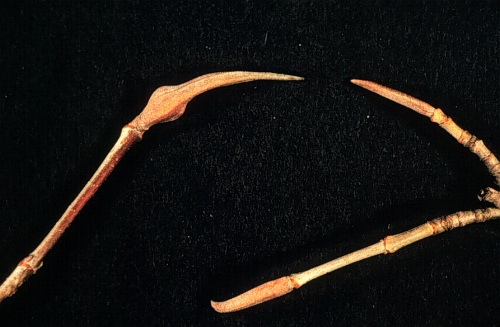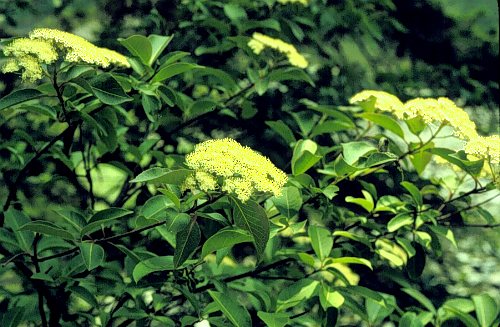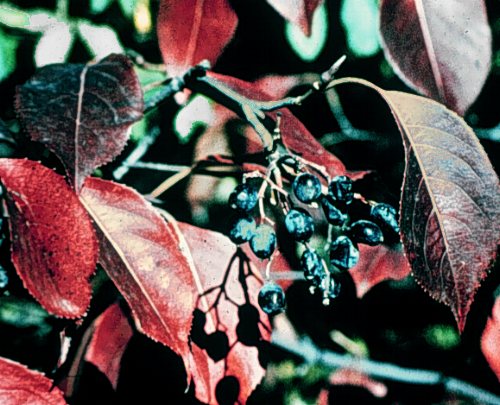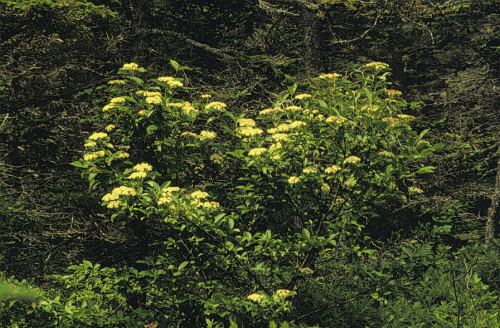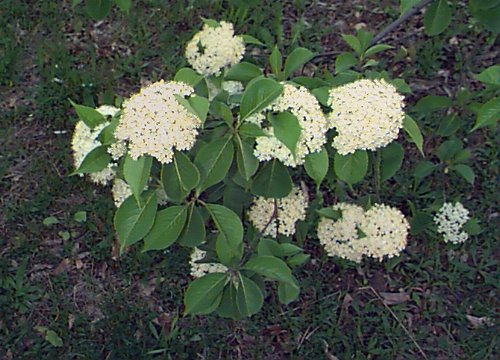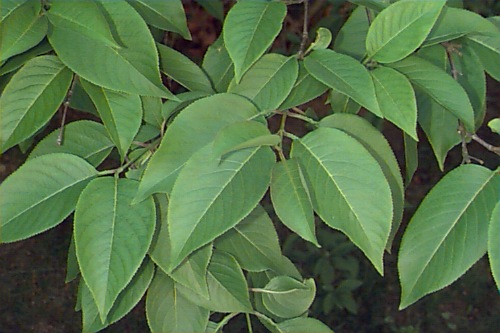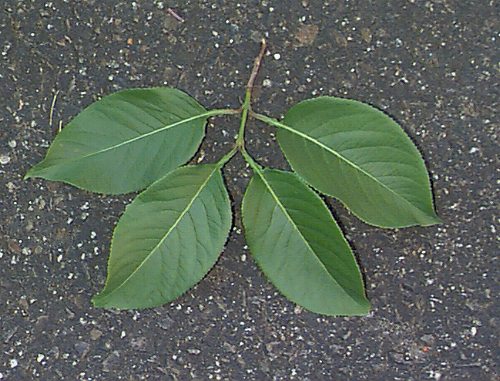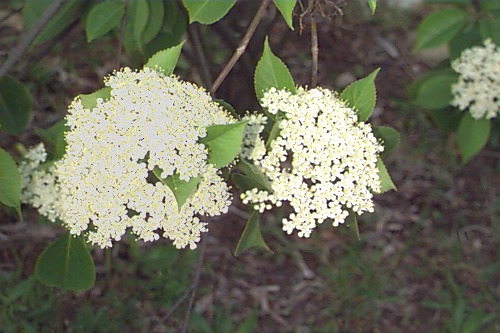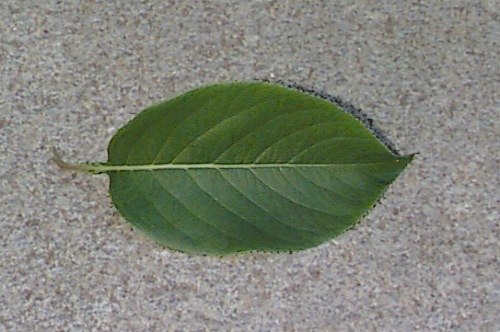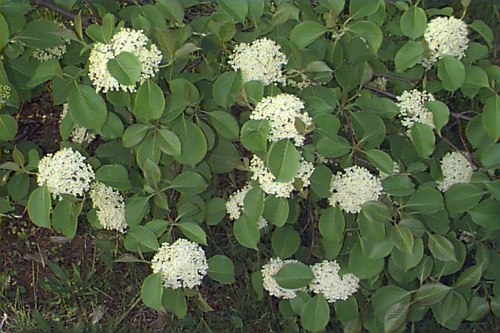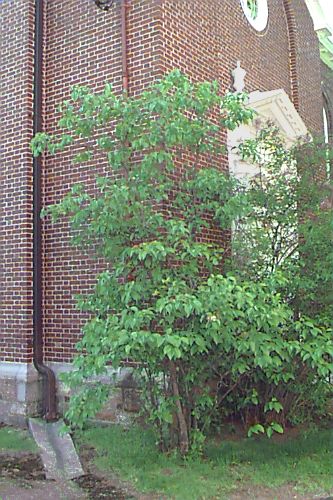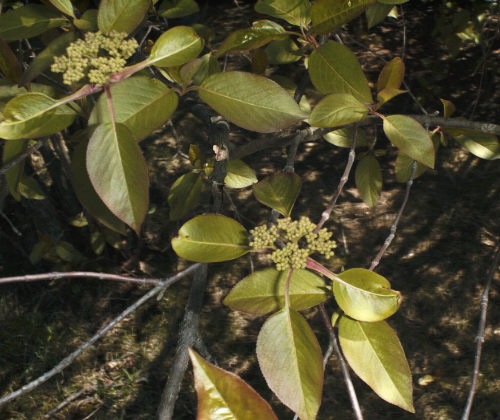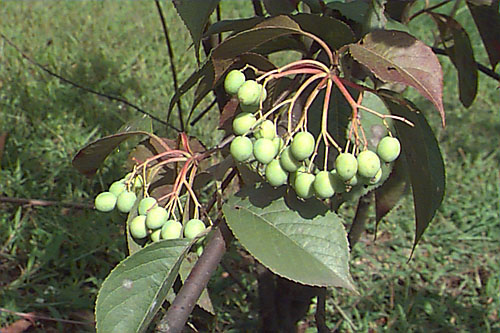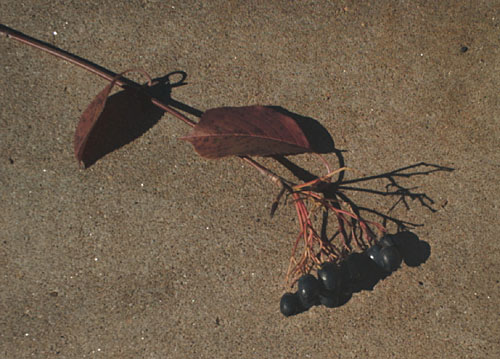Viburnum lentago
Nannyberry Viburnum, Sheepberry
Caprifoliaceae
ExpandHabitat
- native to eastern North America
- hardy to zone 2
Habit and Form
- multistemmed
- deciduous
- a large shrub or small tree if trained as such
- reaches 12' to 15 tall or larger
- shape is irregular to rounded
- branching is upright to irregular
- branch tips typically arch over
- somewhat open at maturity and leggy at the base
- often suckers at the base
Summer Foliage
- opposite, simple leaves
- leaves have an elliptic-obovate shape
- leaves are 2" to 5" long
- leaf apex is acuminate
- petiole is distinctly winged with a wavy margin
- leaves with finely toothed margins
- emerging leaf color is light green
- mature foliage is a dark glossy green
Autumn Foliage
- can be purple-red
- not dependable for good fall color
Flowers
- small, creamy white flowers in flat clusters
- flower clusters are 3" to 4.5" in diameter
- bloom time is mid to late May
- reasonably floriferous and showy in full bloom
Fruit
- 0.5" long oval drupes
- held in pendulous clusters
- fruit color changes from green to yellow, pink, rose and finally to blue-black
- fruit is most appealing before it turns blue black during the color transition
- ripe and rotting fruit smell like wet sheep wool
Bark
- dark grey to black
- breaks up into a pattern of small blocks
Culture
- sun or shade
- tolerant of both moist and dry soils
- very adaptable to many sites
- easily transplanted and established
- suckers readily from the base
Landscape Use
- naturalizing
- shrub borders
- difficult sites
- small flowering tree
- to attract birds and wildlife
- hedges
- background plant
- barrier
- useful for flowers and fruit
Liabilities
- suckers readily from the base
- can get mealybug
- powdery mildew can be a problem
ID Features
- winged, wavy edge to petioles
- opposite, simple leaves
- leaves with a distinctly acuminate tip
- 0.5" long oval drupes
- fruit color is yellow, pink, rose or blue-black
- decaying fruits smell like wet sheep wool
- valvate bud scales
- flower buds are long pointed with a swollen base
- swollen base of flower buds don't split open as in V. cassinoides
Propagation
- by cuttings
- by seed
Cultivars/Varieties
None are commonly available, but several perhaps deserve more attention.
'Deep Green' - This is a handsome large growing selection that reaches 20' tall and features lustrous leaves.
'Pink Beauty' - Not commonly available, this selection offers a variation with the fruit. The pink drupes turn purple with age.
